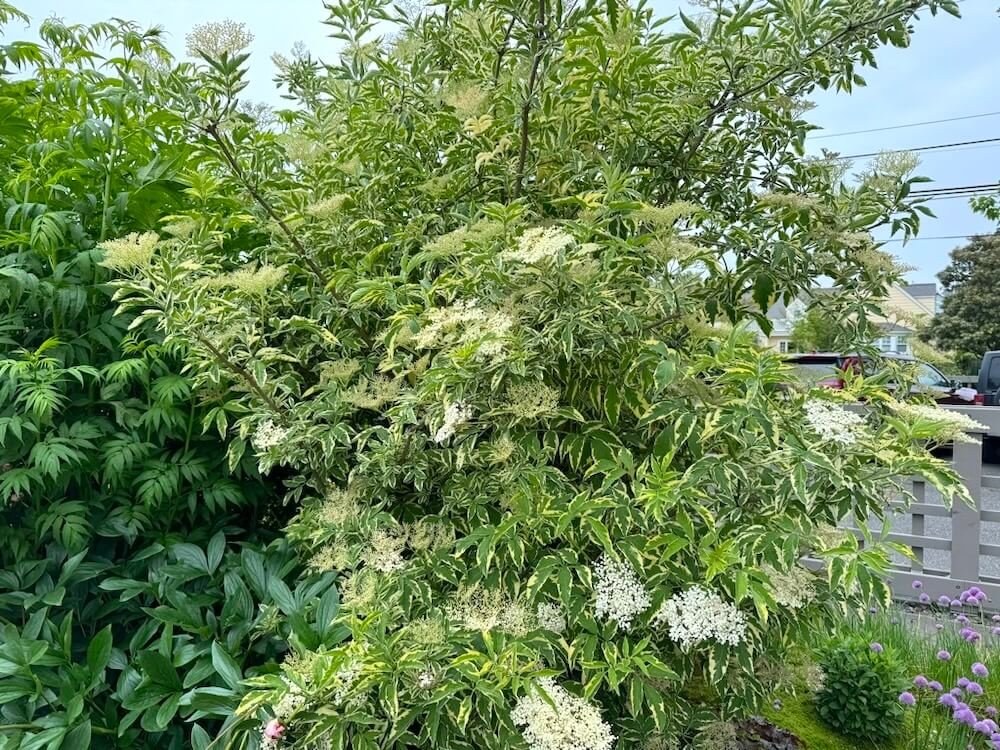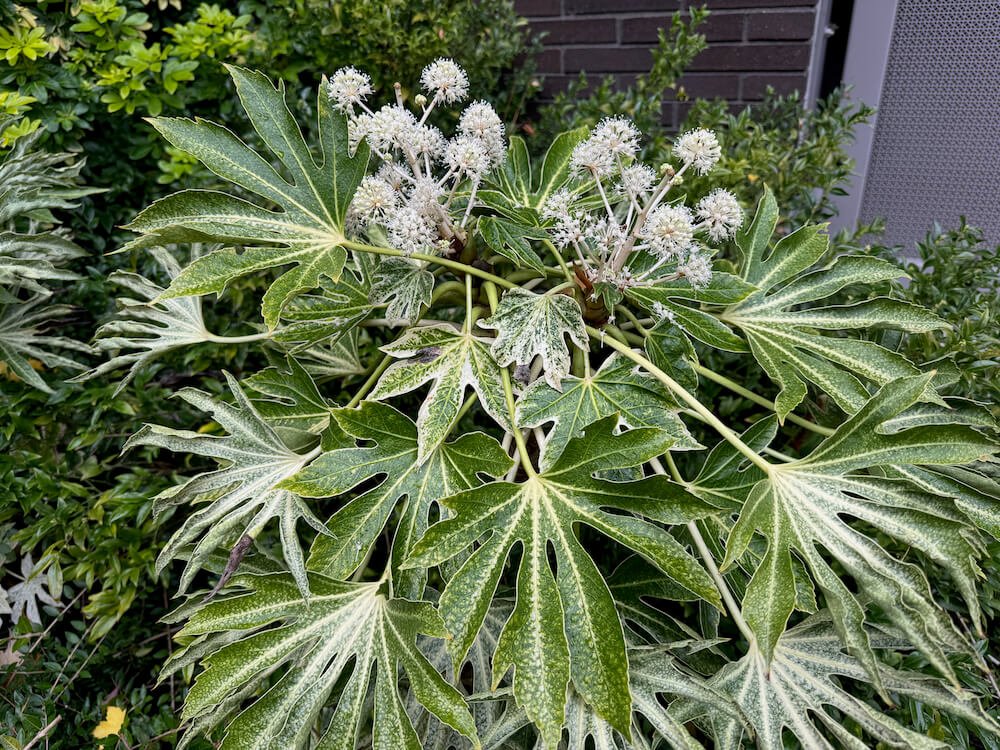 Image 1 of 5
Image 1 of 5

 Image 2 of 5
Image 2 of 5

 Image 3 of 5
Image 3 of 5

 Image 4 of 5
Image 4 of 5

 Image 5 of 5
Image 5 of 5






Sambucus nigra 'Variegata' | Variegated Elderberry
DESCRIPTION
Sambucus nigra 'Variegata', commonly known as the variegated elderberry, is a deciduous shrub admired for its intricate, variegated foliage. The finely divided leaves are a rich green, edged with creamy white margins, creating a bright and textured appearance throughout the growing season. In late spring to early summer, it produces clusters of small, fragrant white flowers that attract pollinators and add a soft, lacy element to the plant's overall look.
Native to Europe, Sambucus nigra has been cultivated for centuries, and the 'Variegata' cultivar is especially valued for its ornamental qualities. Following the flowers, small dark purple-black berries appear in late summer, which can be used in culinary applications or left to feed wildlife. This elderberry is a versatile addition to borders, cottage gardens, or naturalized settings, providing year-round interest and ecological benefits.
DESCRIPTION
Sambucus nigra 'Variegata', commonly known as the variegated elderberry, is a deciduous shrub admired for its intricate, variegated foliage. The finely divided leaves are a rich green, edged with creamy white margins, creating a bright and textured appearance throughout the growing season. In late spring to early summer, it produces clusters of small, fragrant white flowers that attract pollinators and add a soft, lacy element to the plant's overall look.
Native to Europe, Sambucus nigra has been cultivated for centuries, and the 'Variegata' cultivar is especially valued for its ornamental qualities. Following the flowers, small dark purple-black berries appear in late summer, which can be used in culinary applications or left to feed wildlife. This elderberry is a versatile addition to borders, cottage gardens, or naturalized settings, providing year-round interest and ecological benefits.
DESCRIPTION
Sambucus nigra 'Variegata', commonly known as the variegated elderberry, is a deciduous shrub admired for its intricate, variegated foliage. The finely divided leaves are a rich green, edged with creamy white margins, creating a bright and textured appearance throughout the growing season. In late spring to early summer, it produces clusters of small, fragrant white flowers that attract pollinators and add a soft, lacy element to the plant's overall look.
Native to Europe, Sambucus nigra has been cultivated for centuries, and the 'Variegata' cultivar is especially valued for its ornamental qualities. Following the flowers, small dark purple-black berries appear in late summer, which can be used in culinary applications or left to feed wildlife. This elderberry is a versatile addition to borders, cottage gardens, or naturalized settings, providing year-round interest and ecological benefits.
-
Family: Adoxaceae
Height: 10 to 12 feet
Width: 8 to 10 feet
Foliage color: Green with creamy white variegation
Flower color: Creamy white in flat clusters
Bloom time: Late spring to early summer
Light requirements: Full sun to partial shade
Water requirements: Moderate
Maintenance: Low; prune to shape in late winter
Growing zone: USDA Zones 5 to 8
Wildlife attractors: Bees, butterflies, and birds (attracted to the berries)This plant can be seen at the Center for Urban Horticulture.




























